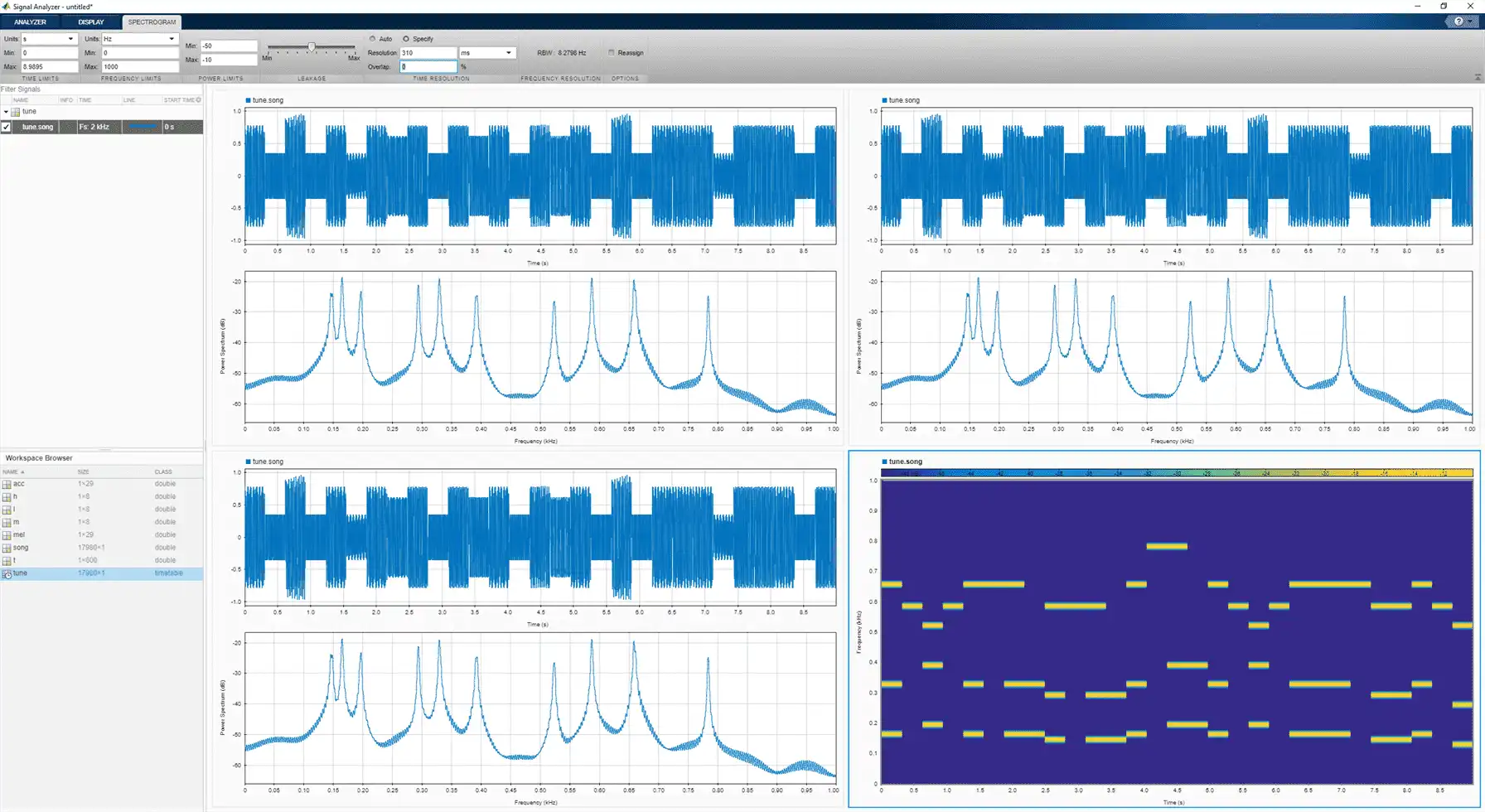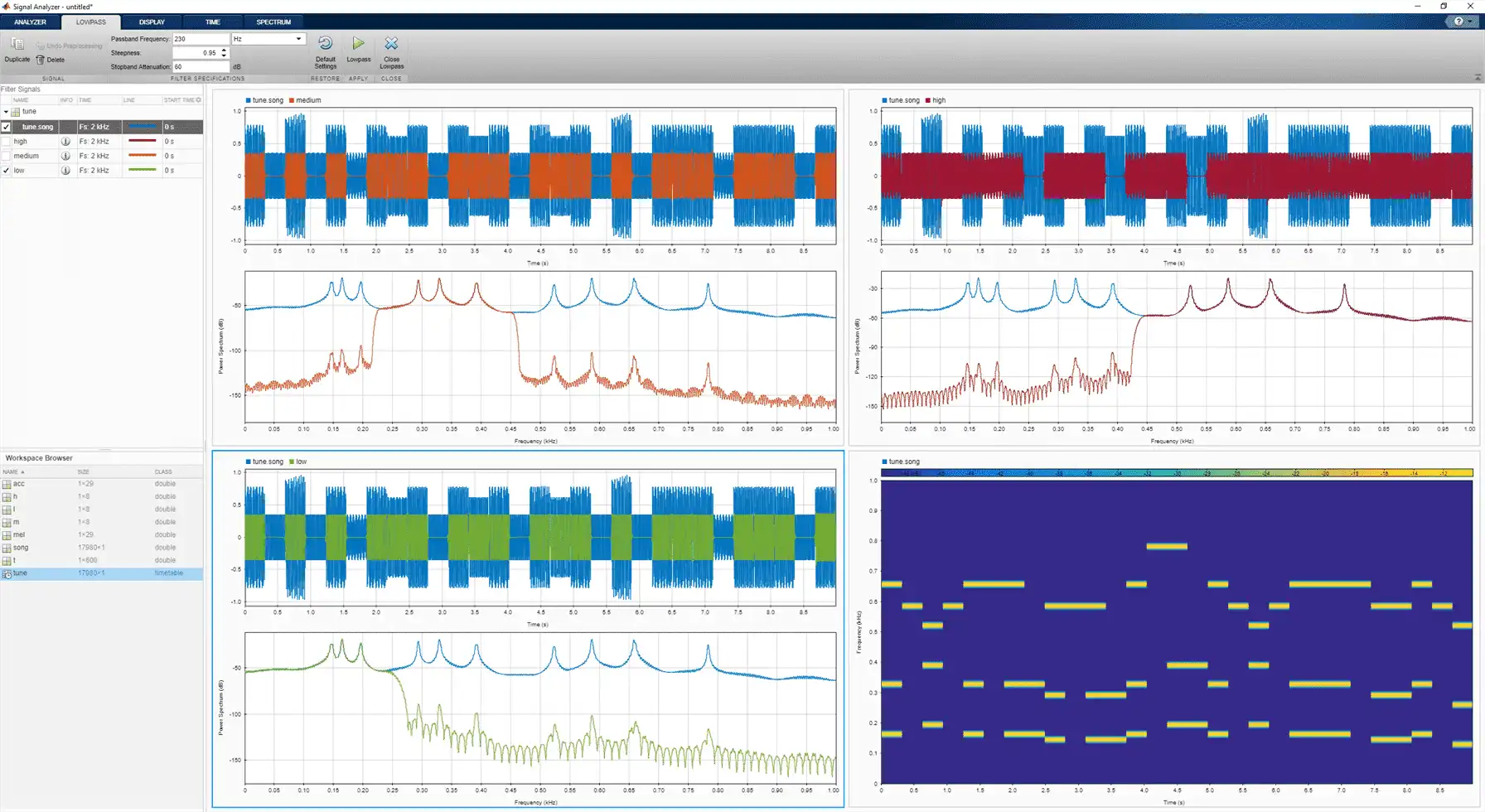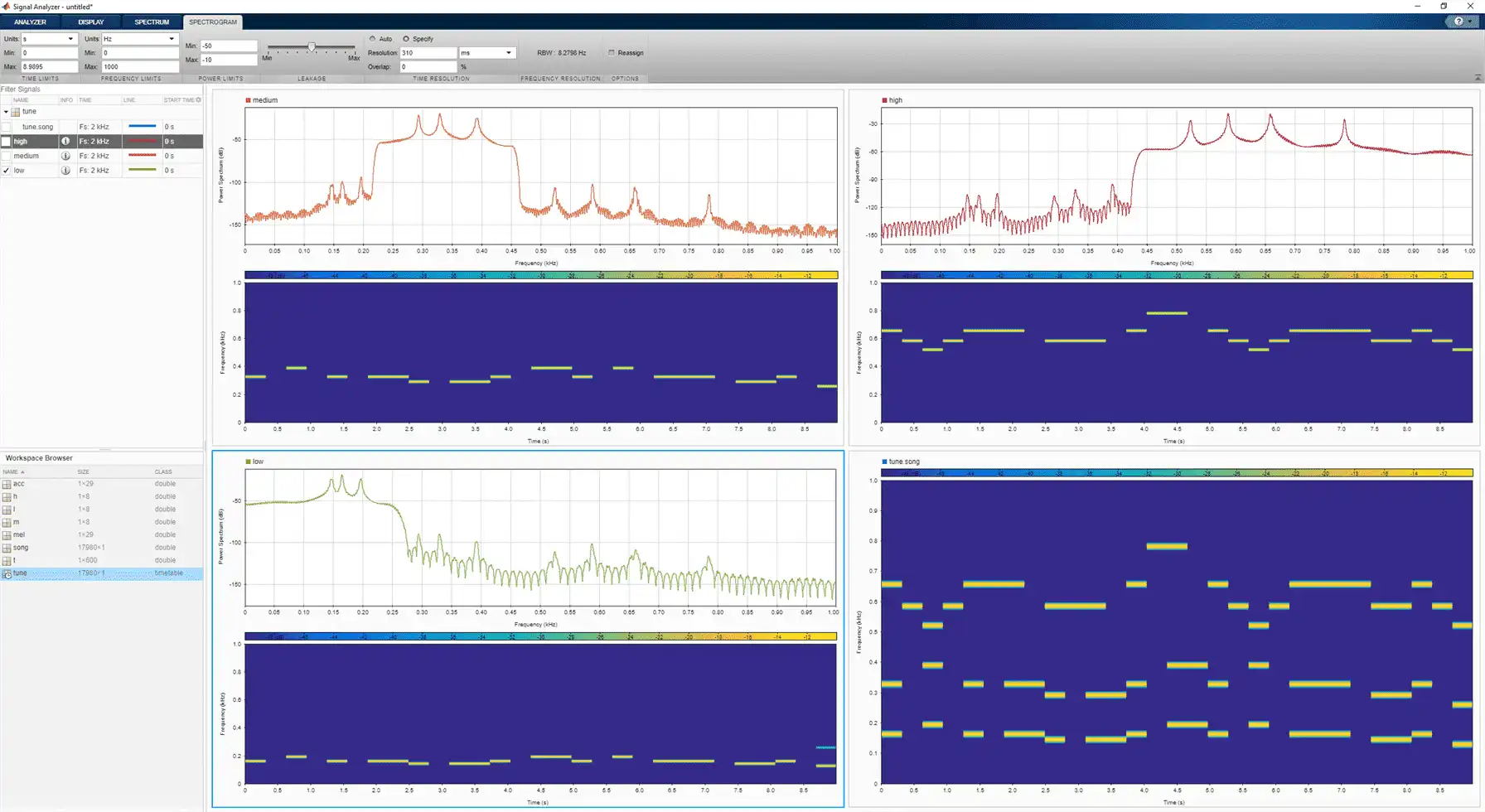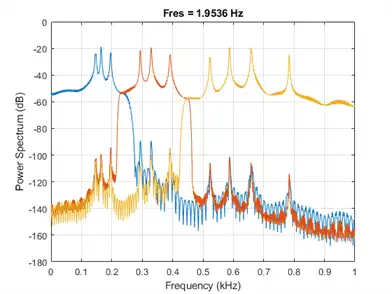mplement a basic digital music synthesizer and use it to play a traditional song in a three-voice arrangement. Specify a sample rate of 2 kHz. Save the song as a MATLAB® timetable.
fs = 2e3;
t = 0:1/fs:0.3-1/fs;
l = [0 130.81 146.83 164.81 174.61 196.00 220 246.94];
m = [0 261.63 293.66 329.63 349.23 392.00 440 493.88];
h = [0 523.25 587.33 659.25 698.46 783.99 880 987.77];
note = @(f,g) [1 1 1]*sin(2*pi*[l(g) m(g) h(f)]'.*t);
mel = [3 2 1 2 3 3 3 0 2 2 2 0 3 5 5 0 3 2 1 2 3 3 3 3 2 2 3 2 1]+1;
acc = [3 0 5 0 3 0 3 3 2 0 2 2 3 0 5 5 3 0 5 0 3 3 3 0 2 2 3 0 1]+1;
song = [];
for kj = 1:length(mel)
song = [song note(mel(kj),acc(kj)) zeros(1,0.01*fs)];
end
song = song'/(max(abs(song))+0.1);
% To hear, type sound(song,fs)
tune = timetable(seconds((0:length(song)-1)'/fs),song);
Open Signal Analyzer and drag the timetable from the Workspace browser to the Signal table. Click Display Grid ? to create a two-by-two grid of displays. Select the top two displays and the lower left display and click the Spectrum button to add a spectrum view. Select the lower right display, click Time-Frequency to add a spectrogram view, and click Time to remove the time view. Drag the song to all four displays. Select the lower right display, and in the Spectrogram tab, specify a time resolution of 0.31 second (310 ms) and 0% overlap between adjoining segments. Set the Power Limits to −50 dB and −10 dB.

On the Analyzer tab, click Duplicate three times to create three copies of the song. Rename the copies as high, medium, and low by double-clicking the Name column in the Signal table. Move the copies to the top two and lower left displays.
Preprocess the duplicate signals using filters.
-
Select the
highsignal by clicking its name in the Signal table. On the Analyzer tab, click Highpass. On the Highpass tab that appears, enter a passband frequency of 450 Hz and increase the steepness to 0.95. Click Highpass. -
Select the
mediumsignal by clicking its name in the Signal table. On the Analyzer tab, click Preprocessing ? and select Bandpass. On the Bandpass tab that appears, enter 230 Hz and 450 Hz as the lower and upper passband frequencies, respectively. Increase the steepness to 0.95. Click Bandpass. -
Select the
lowsignal by clicking its name in the Signal table. On the Analyzer tab, click Lowpass. On the Lowpass tab that appears, enter a passband frequency of 230 Hz and increase the steepness to 0.95. Click Lowpass.

On each of the three displays containing filtered signals:
-
Remove the original signal by clearing the check box next to its name.
-
On the Display tab, click Time-Frequency to add a spectrogram view and click Time to remove the time view.
-
On the Spectrogram tab, specify a time resolution of 0.31 second and 0% overlap between adjoining segments. Set the Power Limits to −50 dB and −10 dB.

Select the three filtered signals by clicking their Name column in the Signal table. On the Analyzer tab, click Export and save the signals to a MAT-file called music.mat. In MATLAB, load the file to the workspace. Plot the spectra of the three signals.
load music pspectrum(low) hold on pspectrum(medium) pspectrum(high) hold off

% To hear the different voices, type % sound(low.low,fs), pause(5), sound(medium.medium,fs), pause(5), sound(high.high,fs)